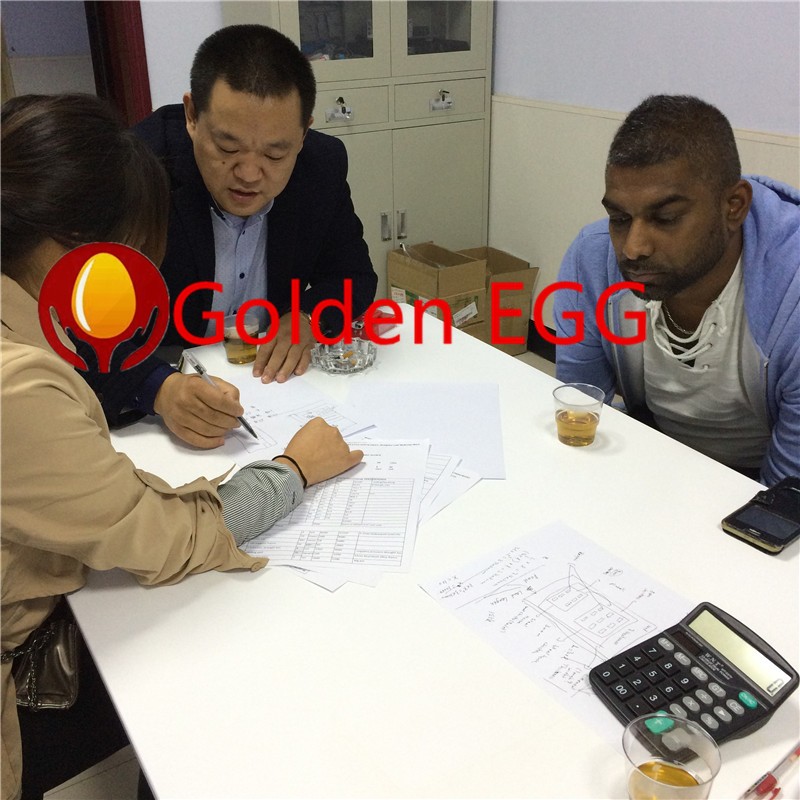To create a good growing environment for chicks, the following points should be strictly observed:
1. Temperature.
Insulation is the key to the success of brooding. The suitable temperature for the brooding period is: 32-35°C in the first week, followed by a 3°C drop every week, and then dewarming after 4 weeks. After that, the best temperature is kept at 25°C. Insulation operations should be based on the behavior of the chicks to determine whether the temperature is appropriate. At a suitable temperature, the chicks spread evenly; if the chicks are tired, wheezed or even prostrated, the feet are said to be overheated; if the chicks huddled together and “squeak”, it means that the thief has entered, and this should be carefully checked. Whether the doors and windows and the ceiling have leaked air. Temperature can be used for brooding umbrellas, pits, flue gas and stoves, gas stoves and other heating equipment.
2. Humidity .
Chicks need to be kept under dry conditions. The appropriate humidity is 60%-70% before 10 days and 50%-60% after 10 days. The feeling of temperature on the chicken body is related to the humidity. The more humid and hot the summer, the colder and colder in the winter.
3. Ventilation.
The purpose of ventilation is to reduce the density of harmful gases and dust in the house, replenish the fresh air, maintain the airflow speed in the house, and adjust the temperature and humidity in the house. When people enter the shed, their eyes and nose will not be stimulated to be moderate. Brooding stage to deal with the relationship between insulation and ventilation. Even the coldest weather requires ventilation for a certain period of time.
The specific approach is to first increase the temperature inside the house, and then open the window (or exhaust fan) for a while, and then close the window (or the exhaust fan) when the temperature in the house drops below the required temperature. Repeated ventilation for several times can achieve this goal. Breeding chickens should also pay attention to ventilation. The house can be equipped with an exhaust fan for lateral or longitudinal negative pressure ventilation. Or install a horn fan for positive pressure ventilation. If the combination of vertical negative pressure ventilation and water curtain equipment is applied, ventilation and cooling effects can be achieved at the same time.
4. Density.
At the age of 1-30 days, about 30 eggs per square meter are raised on the ground or on the Internet; and 46-60 eggs per square meter are provided in multi-layer cages (with negative pressure ventilation system). At the age of 31-60 days, about 15 eggs per square meter are raised on the ground or on the net; 25-30 eggs per square meter are raised in stepped cages. At the age of 61--100 days, about 8 eggs per square meter are raised on the ground or on the Internet, and 12-15 eggs per square meter are raised in stepped cages.
5. Light.
In the first 1-2 days after hatching, overnight lighting is used. The rest of the time is to stop lighting for one hour in the evening, that is, to maintain 23 hours of light time, so that even if the power is cut off, the chicken will not be frightened. The principle of light intensity is from strong to weak. At the age of 1-2 weeks, there should be 2 to 3 watts of light per square meter (the lamp is about 2 meters from the flock); from the 3rd week of age, the amount of light from 0.7 to 1.5 watts per square meter should be used. Actually only The chicken can only see that eating water is enough
6. Litter.
1-4 days old chicks can use kraft paper on the net. After that, the litter used for the ground level raising shall be dry, soft, absorbent, not moldy, and appropriate in length and length. Commonly used litter includes sawdust, rice bran, short-cut corn stalks, rice straw, and broken corn sticks. The moist litter around the drinker should be replaced promptly.
7. Drinking water.
On-line flat-raising or ground level raising can use drinking water and sink water, and ladder-type cages can use sink or teat drinking equipment, but drinking water and drinking water are used within 1 week of age. The source of water for the flock may come from deep well water or tap water, and the water from shallow wells or rivers may be filtered and clarified by sandstones and disinfected by bleaching powder or other disinfectants before use. It is important to ensure the cleanliness of drinking water, and to ensure that the chicken has only enough drinking water.
8. Feed.
Farm stable quality should be selected, reputable manufacturers of feed pellets or concentrate full price, with certain technical personnel and production equipment, full price itself can also be formulated according to the following high-speed standard chicken feed ingredients recommendation list Feed, but chicks are best to use full-price pellets produced by famous brand manufacturers.
9. Hatch fly and rodent control.
Should reduce the humidity of chicken droppings as much as possible, and ensure that chicken droppings are not removed for more than one week; or appropriate amount of flies-killing drugs (for example, 250-500 g of fly-catching net premix per ton of feed) can be greatly increased. Reduce the number of flies, and if necessary, put drugs to kill mosquitoes and flies. Regular use of drugs to eradicate rats, usually once per quarter.
10. Sanitary hygiene.
After a batch of chickens are transferred out of the chicken house, disinfection should be conducted in a timely manner.
























